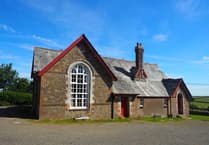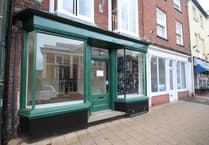ON Friday, February 26, 31 "Zoomers" attended a fascinating talk about the trade in serge, so important to our area in past times.
Our Chairman introduced the meeting by welcoming both the speaker, Peter Maunder, and visitors from other associations, as well as providing a brief background to the more than 20-odd years of research that Peter has achieved on the subject of the Devon cloth trade.
Peter’s recent publication “Tiverton Cloth” is highly recommended reading for those wishing to find out more (please contact: [email protected] for details).
The talk was accompanied throughout with excellent and relevant illustrations, contextual local information as well as detailed examples and explanations of the manufactured cloth in vibrant colour, design and texture from "Passavant’s Pattern Book".
This 18th century working document is a goldmine of samples and swatches of actual shipments made by a Swiss born merchant of the time, based in Tiverton, and gave the audience a valuable insight into the range and weight of the fabrics.
Peter began his history of the serge trade from 1475 when a treaty was signed between France and England for the exchange of Devonshire kersey and serge for Breton linen, providing a major market for local products.
This was augmented when John Greenaway of Tiverton joined the Merchant Adventurer’s Guild in order to access the Low Countries in 1497.
Looms, Tillett (printing) blocks and wool combers from this period can be found in the Royal Albert Memorial Museum and you may recall from an earlier local talk from M Baldwin that we were surrounded in Thorverton by the leats and fulling mills used to pound and scour the grease from the cloth to toughen and process the raw material.
Various setbacks came to the trade when Spanish weavers began to compete for the Dutch market, but cheaper domestic labour in the County gave Devon undyed cloth the edge.
By 1676, 77 per cent of Exeter’s serge was destined for the Low Countries, corroborated by archaeological evidence from the distribution density of contemporary lead seals, previously attached to cloth bales, found in the Netherlands.
By 1700, some of the earliest trade unions in the country had been established in the form of local Combers and Weavers Clubs and Defoe provides an authenticated source describing the Exeter Serge Market and local spinning in "A Tour thro’ the Whole Island of Great Britain".
Developments in financial instruments, additional sources of wool and pattern cards demonstrate the growth and modernisation of the trade, curtailed, unfortunately, by both the Industrial and French Revolutions.
The subsequent loss of markets, a decline in the significance of the County’s strengths and unsuccessful attempts to industrialise (at Ottery and at Heathfield’s Mill in Tiverton) resulted in the ultimate decline of local manufacture by the mid 19th century.
This was a fascinating talk on a subject of local significance which fully engaged the audience in wide ranging questions and feedback. Our grateful thanks to Peter Maunder.
Our next talk, on March 26, by John Allan is about “St Nicholas Priory”.
Recorded by Ann Marshall




